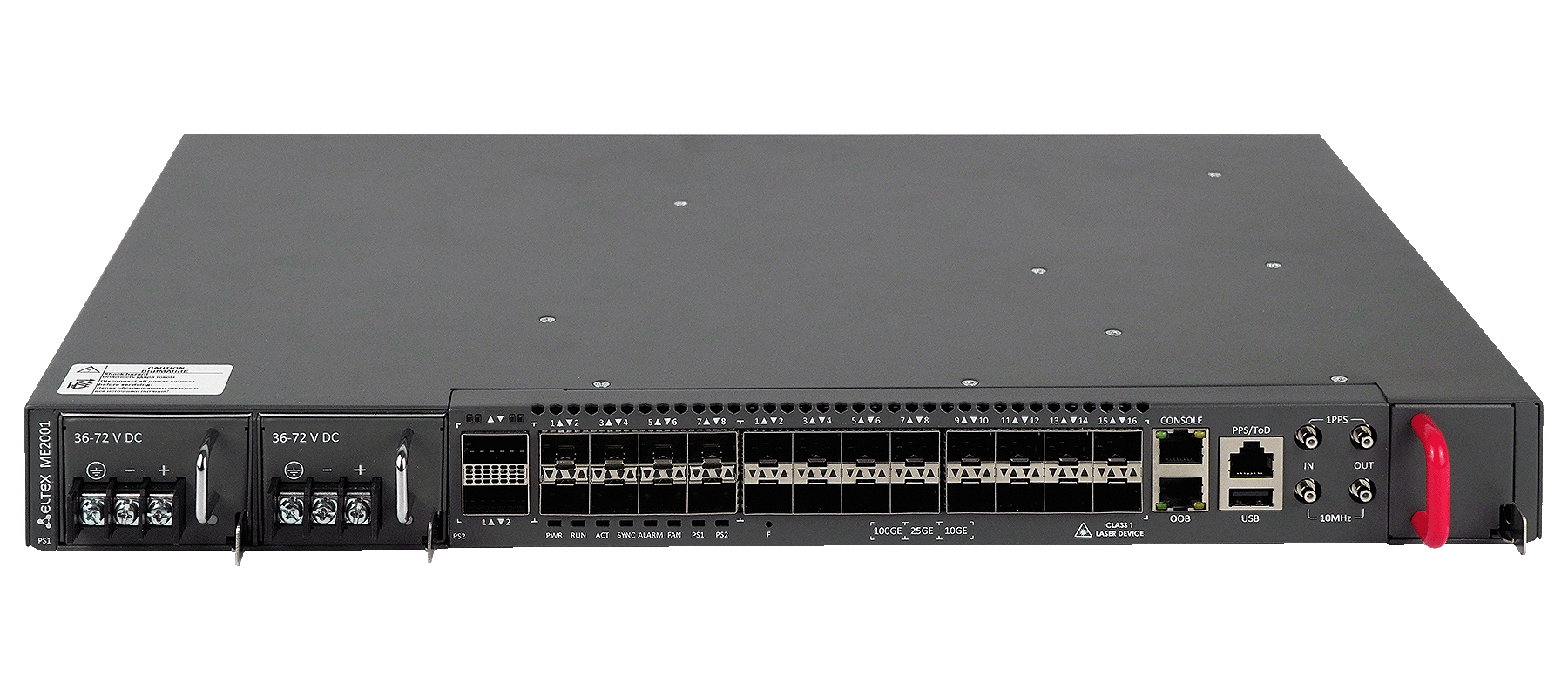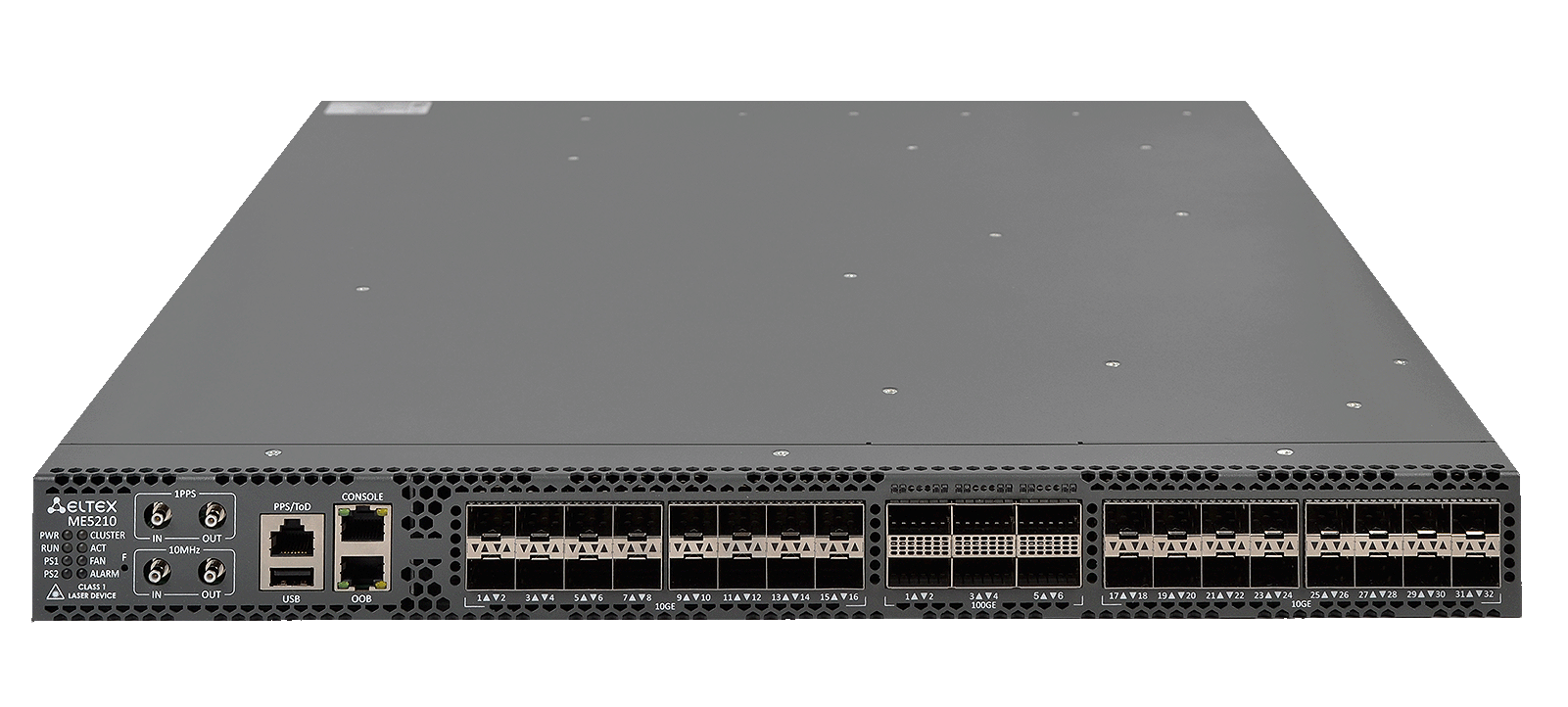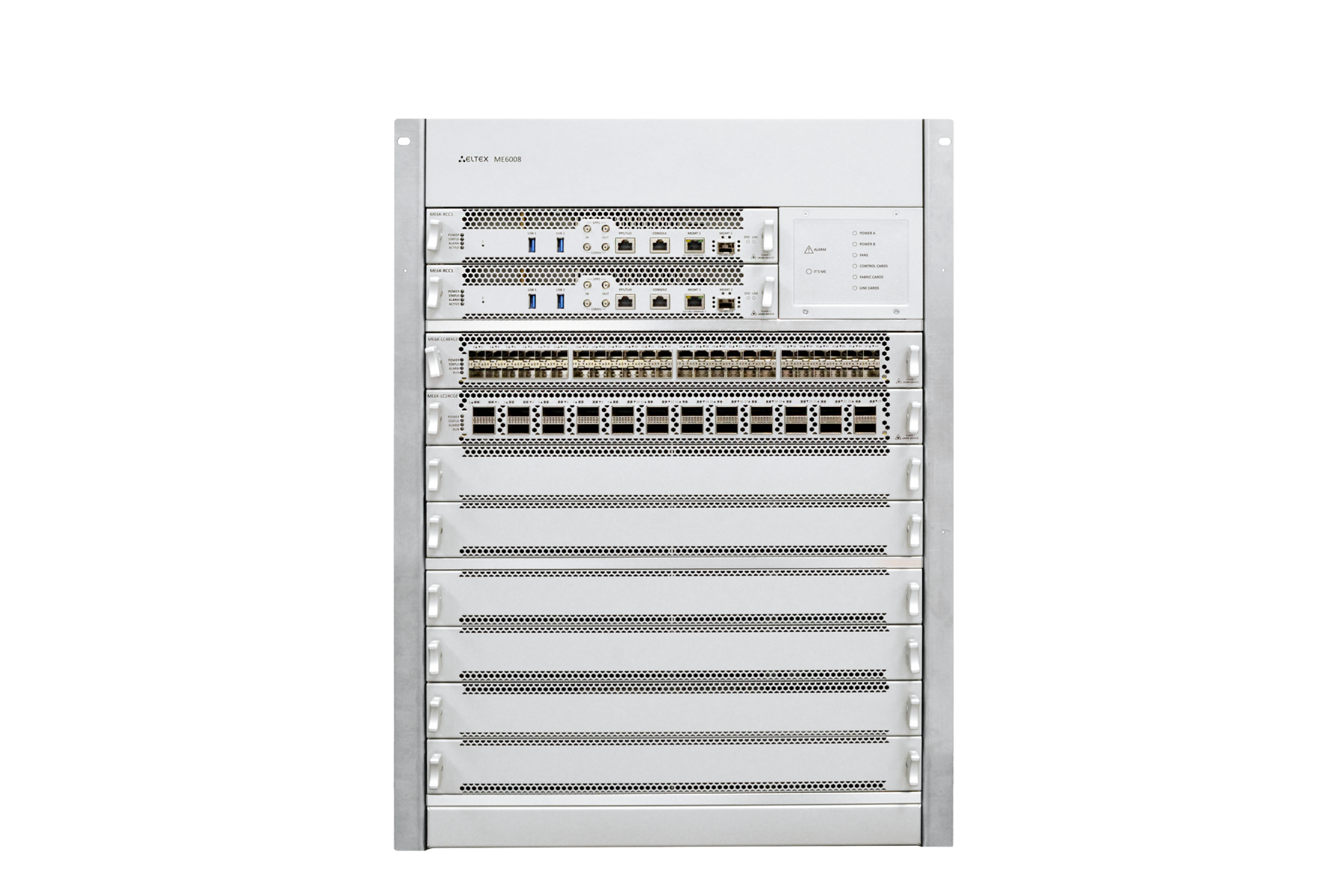For carrier and corporate large-scale tasks: overview of Eltex ME backbone routers


Introduction
The Internet and its services have long begun to define our lives, the ways we interact with other people, and the functioning of economic sectors. The deployment of 4G and 5G mobile networks, provider and carrier networks, cloud services, critical enterprise applications, and communication with remote branches – each of these tasks requires a high-performance and fault-tolerant network transport infrastructure.
In carrier and large corporate networks, data travels vast distances through dozens, hundreds of intermediate nodes. Backbone routers play an important role in this chain: they provide high-speed transport between different networks and network segments. And the quality of services for millions of end users directly depends on their performance and functionality.
In this article, we will talk about the new generation of Eltex backbone routers of the ME series and the three models included in it: what features they provide and for what tasks they are suitable.
New generation of routers
The ME series of the new generation of Eltex backbone routers currently includes three models with different performance and functionality for access, distribution and core layers of IP/MPLS network.
ME2001 is the youngest model in the line with a fixed set of interfaces and performance of up to 300 Gbps. It is suitable for routing at the access layer of an IP/MPLS network: the junction point of local L2/L3 segments with the backbone network, connection of base stations of mobile operators, including 5G, primary traffic routing.
When traffic from multiple edge access devices needs to be gathered in a single node for further transmission, the ME5210S router comes into play. Its performance of 920 Gbps and a fixed set of productive ports effectively solves the tasks of the distribution layer, collecting traffic flows for transmission to the core of the MPLS network.
ME6008 is a modular chassis platform with a maximum performance of 19.2 Tbps designed to create the core of backbone networks, which gathers the main traffic volume from the entire network.
ME6008* provides high-speed switching and transmission of aggregated traffic between IP/MPLS network nodes. Thanks to eight slots for linear interfaces, the port staff is flexibly configured for specific deployment tasks. The ME6008 model has a high scalability and fault tolerance at the module level.
*ME6008 is under development.
Hardware platform
The architecture of ME routers is based on distributed packet processing, hardware switching and routing. Each device is based on specialized Control Plane control processors that work in conjunction with high-speed packet ASIC processors and TCAM coprocessors with a large capacity of tables (FIB). The significant amount of buffer memory in all presented ME routers helps to smooth out peak loads and ensure high-quality operation of QoS mechanisms.
This architecture ensures stable performance even under maximum loads and complex routing configurations.
Opportunities
ME supports a full stack of IPv4/IPv6 routing protocols and wide range of MPLS services: LDP (including FRR), mLDP, MPLS pseudowire with PW backup, RSVP-TE, LDPoRSVP, CSC, etc.
MPLS Traffic Engineering provides tools for intelligent network load balancing. Explicitly defining LSP routes helps to bypass potential bottlenecks and ensure guaranteed throughput for critical services.
For modern multiservice delivery scenarios, EVPN/MPLS and EVPN/VXLAN are used, which simplify the connection of distributed data centers.
The quality of service is ensured using advanced QoS features, including configurable HQoS, for fine-grained resource allocation across traffic classes and guaranteed service levels.
The deployment of mobile networks, including 5G, has dramatically changed the requirements for synchronization accuracy in telecommunications networks to nanoseconds. In ME routers synchronization is implemented using the SyncE and IEEE 1588v2 (PTP) standards, which is crucial for the operation of base station equipment.
L2VPN and L3VPN services (L2/L3-MPLS VPN, VPLS, VPWS, BGP/MPLS VPN) provide isolated communication channels with individual service quality parameters for the needs of corporate clients and operators.
You can view the extended list of functionality in the product profile on the Eltex website.
Not only for operators
Eltex backbone routers were originally designed for operator tasks at the access, distribution, and core layer of the IP/MPLS network. At the same time, their functionality and performance make them in demand for a wide range of scenarios. Here are some of them.
Mobile operators can use ME routers to connect 4G and 5G base stations to the backhaul. Support for accurate time synchronization ensures the operation of radio equipment, and the use of MPLS switching technologies allows isolated transmission of traffic from various services.
Large corporations and geographically distributed holdings such as banks, manufacturing holdings, and retail chains can create corporate MPLS networks based on the ME router to connect head offices, branches, and remote units. L2/L3 VPN services will help to transfer traffic isolated from various departments, and advanced QoS mechanisms guarantee priority to critical business applications.
We also recommend including ESR service routers in your solution design when using overlay tunnels, encryption, NAT, and firewall filtering.
Data centers and cloud providers can use ME to connect geographically remote fabrics. Support for EVPN/MPLS and EVPN/VXLAN simplifies the deployment of modern cloud services and the provision of isolated network segments.
Currently, only L2 services are available for EVPN/MPLS and EVPN/VXLAN.
Conclusion
Eltex ME series backbone routers are a comprehensive solution for large networks of telecom operators and companies. The new generation of devices creates a scalable architecture that can handle the growing demands on bandwidth and fault tolerance.
For more information on how ME routers can help you in achieving your goals, please contact Eltex Sales Department at foreign.sales@eltex-co.ru
Mentioned products
- Bandwidth:
- 300 Gbps, 300 Mpps
- Interfaces:
- 16x10G SFP+, 8x25G SFP28, 2x100G QSFP28
- Bandwidth:
- 920 Gbps, 720 Mpps
- Interfaces:
- 32x10GE SFP+, 6x40/100GE QSFP28, 1xOOB 1GE, RS-232 (RJ-45), 1xUSB 2.0
- Performance:
- up to 19.2 Tbps
- Bandwidth per slot
- up to 2.4 Tbps
- Interface cards:
- up to 8 pieces per chassis



